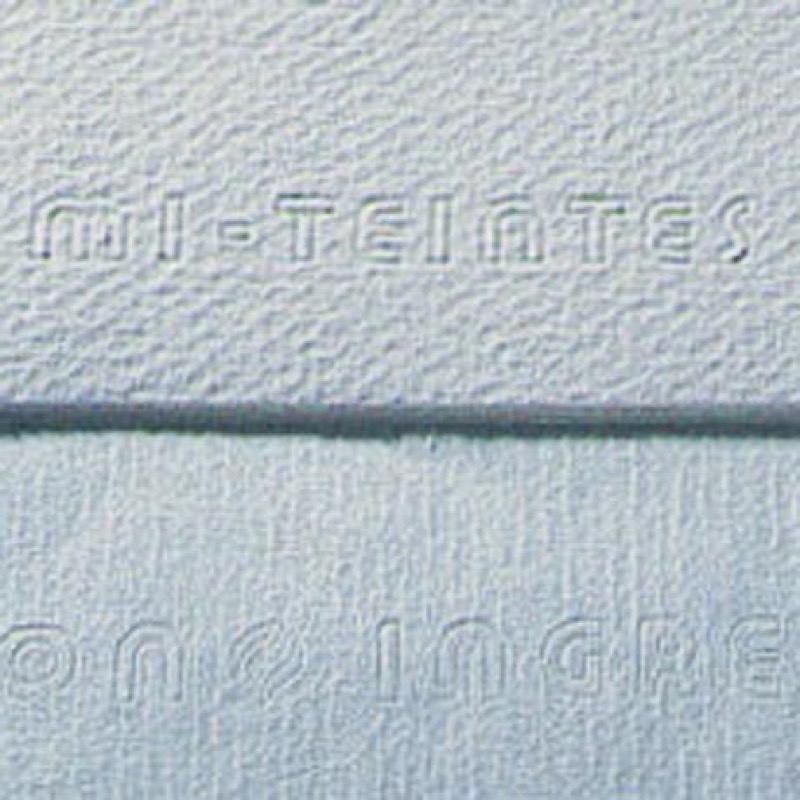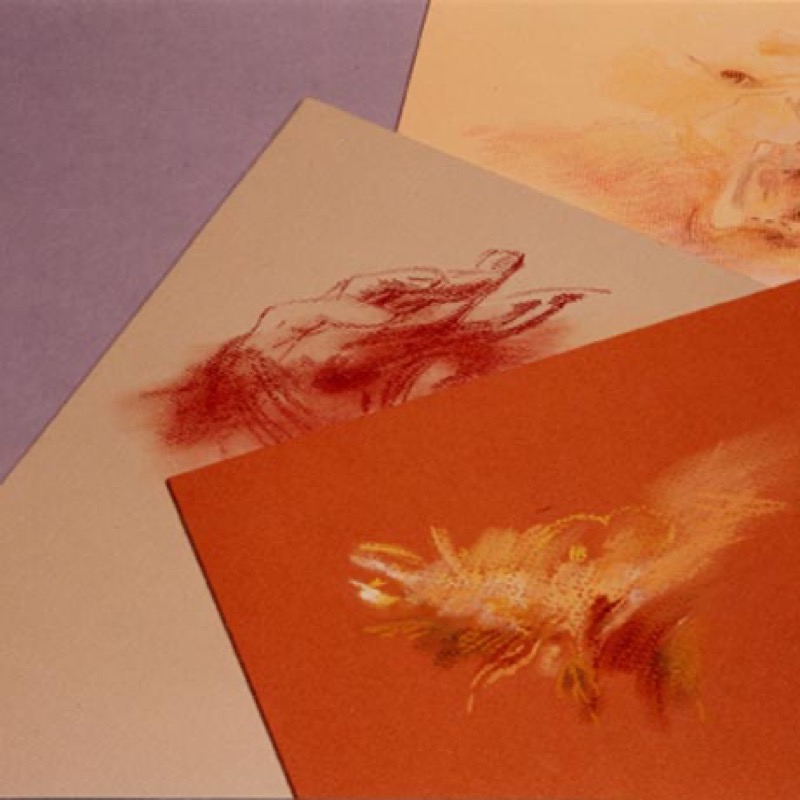Do you work with dry or oil pastels? There are two parameters that will guide your choice of paper for either medium, to be made on the basis of the characteristics of the work you want to create.

1. Texture of the paper
Pastels are applied in layers. However, the amount of drawing material a sheet of paper can hold before becoming saturated depends on its texture and grain.
1.1. The great classics
- Canson® Ingres Vidalon® paper: veined with fine parallel lines, it is appropriate for light pieces that do not require dense layering.
- Canson® Mi-Teintes® paper: this paper is thicker and sturdier, with two different sides. you can draw on either the smooth side or the honeycomb side (with a texture of crisscrossing lines). This side accepts heavy layering.
- Pastel board: It has a cork particle texture. It has a significant ability to adhere: no need for fixatives! Note! It is incompatible with oil pastels and, globally, with any wet technique.
- Pastel Soft Touch paper: its distinctive texture is well-suited to stumped and velvety effects.
1.2. Originals
- Watercolor paper: exclude satin surfaces as too smooth, and go for a fine or rough grain (known as "torchon"), compatible with dry pastels. It is water resistant: you can color it before using (wet or textured wash, acrylic medium).
- Sandpaper type paper: it has the same characteristics as paper used for sanding. Choose a fine grain, abrasive enough to hold pigments without fixatives and providing interesting texture effects, but not too rough… or your sticks will "melt away" very fast!
- Other media: work on thick boards, wood or even pre-stretched canvas… On one condition: prepare your medium with a specific primer (acrylic paste), used to increase pigment adhesion. You can also use laminated boards: they have the advantage of not needing primer and are available in a broad palette of shades.
1.3. Special for Oil Pastels
Any medium designed for oil painting will do. Canvas textured papers, canvases and pre-stretched canvases can be used to great effect and will preserve of your work better over time.

2. Paper color
Even when applied heavily, pastels never cover paper evenly: they build up on raised areas and shun hollows. As a result: colors fade on white paper. Obtaining dense backgrounds implies significant layering… at the risk of saturating the medium. In short, use dry pastels on colored media!
Canson® Ingres Vidalon® and Canson® Mi-Teintes® papers are available in a wide range of light and dark, bright and soft colors.
Choose your paper on the basis of your work: blue or gray if the sky is the dominant feature, ocher or beige for a portrait (you can choose the best one for your subject's complexion from the many shades available).
Recommended product:
Mi-Teintes®
See also :
Pastel
Pastels & Colour: in three key steps
